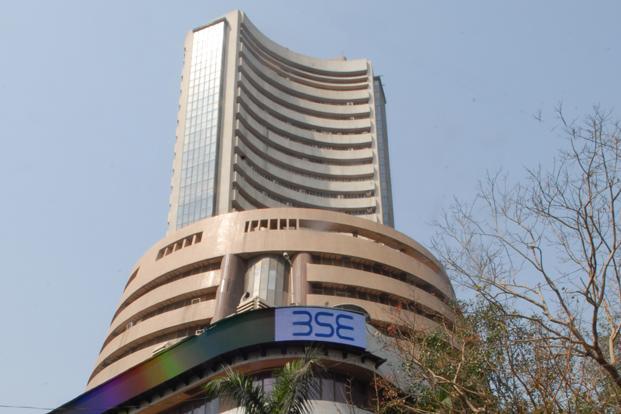Sensex, Nifty end 1st day of 2017 lower; Midcap, Smallcap shine

After spectacular rally in previous week, equity benchmarks started the first trading day of the year on a negative note amid volatility Monday, partly weighed by dismal manufacturing growth. However, the broader markets outperformed smartly. Banking & financials dragged while auto, healthcare, infra and select oil stocks supported the market.After 274-point swing, the 30-share BSE Sensex closed 31.01 points lower at 26595.45. The 50-share NSE Nifty was down 6.30 points at 8179.50.
The broader markets bucked the trend as the BSE Midcap and Smallcap indices gained 0.8 percent and 1.2 percent, respectively. More than two shares advanced for every share falling on the exchange.
Experts expect the volatility to continue as the street awaited quarterly earnings, which will start next week with Infosys, to analyse the impact of currency demonetisation on profitability. According to them, recent credit sops by the Prime Minister Narendra Modi and cut in lending rates by banks may boost the economy in long term.
Shankar Sharma of First Global Securities says outperformance of midcaps will continue through the year but India will underperform in comparison to emerging markets if headline indices are taken into consideration.
With the partial lifting of 50-day curbs introduced during demonetisation, it will be crucial to see data in the next 1-2 months to assess the impact of the currency drain-out exercise, he says, adding that the larger companies are likely to be affected more than the smaller ones.
Mixo Das of Nomura expects some weakness in Asian equities in H12017, as earnings and valuations both come under pressure, with some recovery later.
Manufacturing Purchasing Managers’ Index (PMI) recorded below the crucial 50 threshold for the first time in 2016 during December, down from 52.3 in November to 49.6. It indicated that the rupee demonetisation took a toll on manufacturing performance. Nikkei IHS Markit says companies saw new work and output dip for the first time in 2016. In turn, quantities of purchases were scaled back and employment lowered.
Auto sector hogged the limelight as the impact of currency demonetisation on December sales was limited compared to analysts’ expectations. Nifty Auto index surged 2 percent. Overall auto sales data was mixed in the month gone by.
Tata Motors spiked 3.4 percent as after the market closing the company said sales grew by 2 percent led by passenger vehicles segment that showed a 35 percent growth, though comercial vehicles sales declined 9 percent due to demonetisation. Maruti Suzuki was up 2.7 percent as exports surged 47.1 percent, though overall sales declined 1 percent.
Mahindra & Mahindra gained 3.4 percent as commercial vehicle sales grew by 14 percent and tractor segment showed 9 percent growth, though overall sales fell 4 percent. Eicher Motors climbed 3.4 percent after a 42 percent growth reported by Royal Enfield. However, Bajaj Auto dropped 1.4 percent after sales declined 22 percent YoY.
Nifty Bank index lost over a percent after banks cut lending rates. State Bank of India slashed lending rate by 90 bps across all tenors followed by other PSU banks while in private banks, Kotak Mahindra Bank cut rates by 45 bps. SBI (down 2.5 percent), ICICI Bank (down 1.4 percent) and Axis Bank (down 0.7 percent) were under pressure. HDFC was the biggest loser, down 3.77 percent.
Lupin was up 1.4 percent on receiving approval from US FDA for generic Evoxac capsules that is used to treat symptoms of dry mouth.
L&T rose 0.8 percent as L&T Hydrocarbon consortium bagged two orders from Saudi Aramco. It also bagged smart city project for Pune.
Among others, Tata Steel surged 3.8 percent followed by Asian Paints, Adani Ports, Bharti Airtel and Dr Reddy’s Labs.
